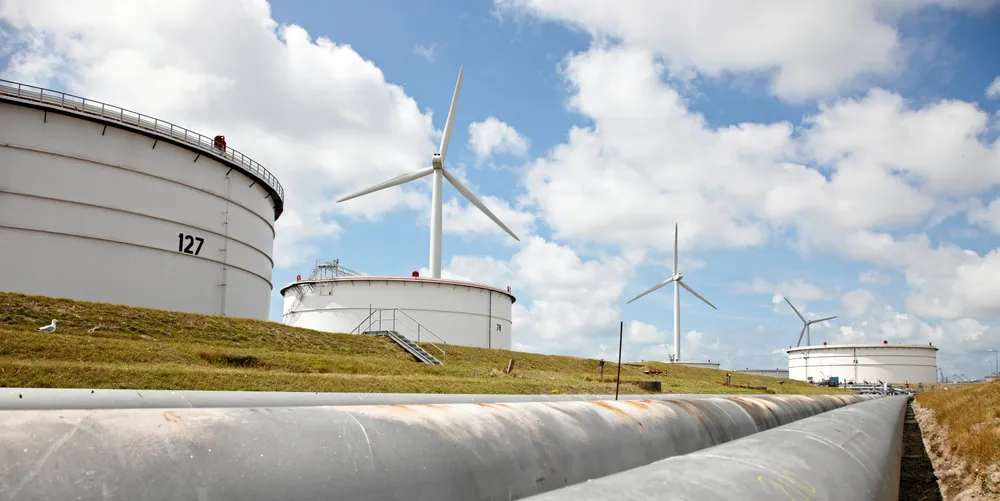Oil giants TotalEnergies, BP and Shell to 'become renewable energy majors by 2030': Capgemini
Number of green power majors to more than double this decade, with two or three oil & gas giants joining the likes of Enel, Iberdrola and Orsted, study finds

The consultancy points to four renewable supermajors existing today, which all have shifted early from fossil fuels, leveraging regulatory support and investing massively in renewables with clear choices as to technologies and geographies: Enel, Iberdrola, Orsted and the only company outside Europe in this group, NextEra.
“Our survey shows that these organisations will remain majors and could be joined by two or three additional oil & gas majors, (notably Europeans TotalEnergies, BP, and Shell) as well as one or two utilities wanting to accelerate significantly and join the pack (Engie),” the report states.
The three supermajors have led the way in planning hugely increased investment in renewables and the energy transition, although all still expect to get the majority of their revenues from oil & gas for the foreseeable future.
Enel is likely to maintain its global green power lead, likely reaching more than 90GW of installed renewables capacity by 2030, followed by TotalEnergies with more than 70GW, and Iberdrola with 60GW, Capgemini said, pointing to Eurostat figures.
NextEra is seen boosting its renewables generation capacity to above 50GW, Engie to 50GW, and BP close to that capacity figure.
But the report also noted that investments can be announced without details on the technologies to be employed, and that US IOCs have not yet shifted towards a more sustainable future.
“This investment pace doesn’t meet climate change needs,” the report concludes.
Philippe Vié, group vice president energy and utilities sector at Capgemini said as energy consumption and greenhouse gas emissions after the Covid-19 pandemic are on the rise again, the world needs realistic affordable plans to accelerate the energy transition.
“Curbing the climate change trajectory requires a shift in gears when it comes to investment, and a requirement to consider the right balance between investment and a tangible result,” Vié said.
“Every dollar invested must lead to a decrease in emissions.
“Much more investment in low carbon generation is needed now if we are to meet both the growth in electrification - two to three times the current capacity are required by 2050 - and at the same time, a decarbonising of electricity generation.”
All renewables supermajors are investing in hybrid assets, according to the report, combining wind, solar and storage for a significant share of their new installations, representing around 40% of new investments.
But investment in new generation assets won’t be sufficient.
Capgemini also points out that according to the International Energy Agency (IEA), spending in aging power grids will double in the next decade, with up to $400bn per year to be invested in electricity grids between 2025 and 2030.
“It may come as no surprise that many experts say that for every dollar invested in renewables, another dollar will also need to be invested in the grid to manage generation assets distribution and intermittency,” the report states.
Electricity grid investments are needed to maintain grid stability as an ever higher share of distributed and intermittent renewables is fed into power networks, a massive electrification is expected due to electric vehicles charging, heat pumps, storage and flexibility development, and the expansion of smart grids.
“Growing the smart grid at scale will take between 10 and 15 years for the most advanced DNOs [distribution network operators] and tens of billions in investments, which is consistent with plans announced by the largest network operators,” the report finds, adding that EDF, Enel, Iberdrola and E.ON are leading the pack in this development, while Chinese network operator T&D may also be part of that group.
Capgemini said that in general utilities emit about ten times less than oil & gas IOCs. Some, such as Engie or Enel, still operate coal or gas plants, but decommission roadmaps exist.
But some progress can be noted.
“This amounts to basically nothing,” the report said.
However, as of June 2021, the IEA reported a "significant increase of up to 4%, with European majors floating between 10 and 20%," Capgemini notes.
While oil & gas companies as a whole are stepping up their renewable energy spending, a clear distinction between European and other players continued.
“BP, Shell, and TotalEnergies have clear objectives on climate change mitigation, under the pressure of their stake and shareholders, but also in a diversification perspective with the forecasted end of the fossil fuels era,” the WEMO report said.
“Exxon Mobil sticks to historical core business, and hasn’t announced any significant energy transition projects, beyond shy 2025 emissions reduction targets.”
(Copyright)